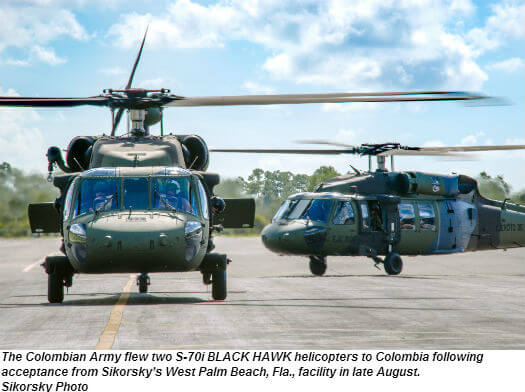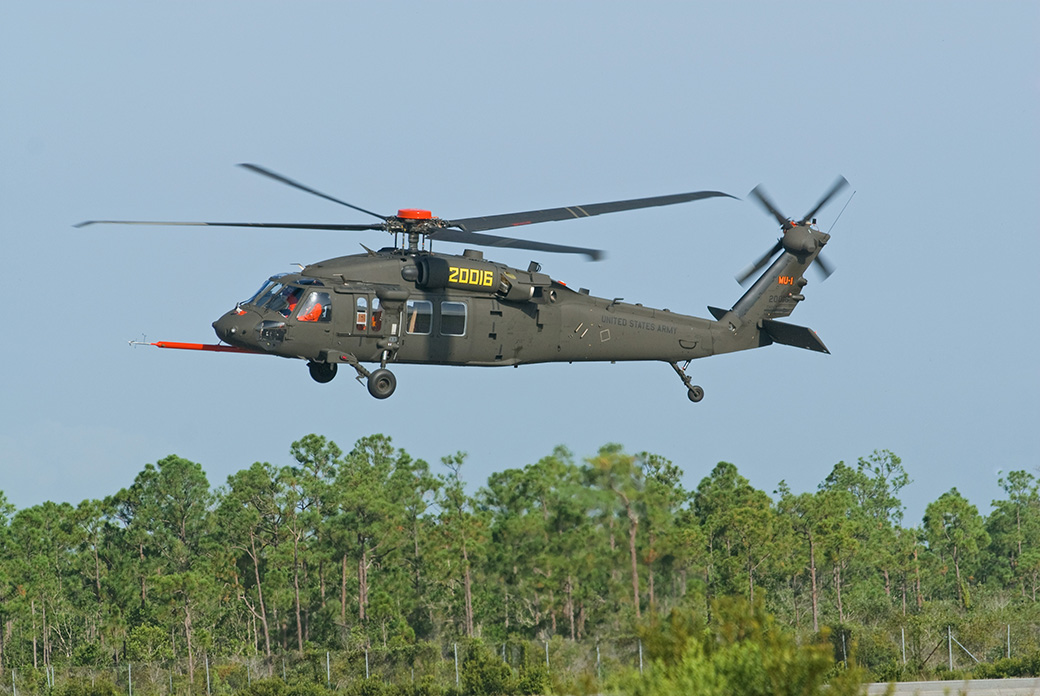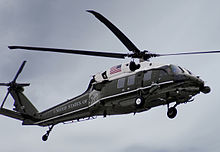Leading Attributes and Advantages of the Sikorsky S 70 Helicopter
Leading Attributes and Advantages of the Sikorsky S 70 Helicopter
Blog Article
High-Performance Multi-Role Rotorcraft Featuring Advanced Cabin Technologies and Integrated Sensor Systems
The realm of rotorcraft innovation has seen significant advancements in current times, specifically in the world of high-performance multi-role rotorcraft outfitted with sophisticated cabin technologies and perfectly incorporated sensing unit systems. These technologies have not only boosted the functional abilities of rotorcraft but have additionally considerably affected contemporary aeronautics operations on numerous fronts. From improved objective flexibility to improved functional effectiveness, the convergence of advanced cabin modern technologies and integrated sensor systems has actually ushered in a brand-new age of possibilities for rotorcraft applications. In the following conversation, we will explore the advancement of rotorcraft innovation, look into the realm of innovative cockpit developments, and examine the effects of incorporated sensor systems on the functional adaptability and efficiency of modern rotorcraft.
Evolution of Rotorcraft Modern Technology
The development of rotorcraft innovation has been marked by significant advancements in the rules of aerodynamics, products, and propulsion systems, shaping the capacities and performance of modern-day rotorcraft. Additionally, innovations in propulsion systems, including more powerful engines and ingenious propulsion innovations, have made it possible for rotorcraft to attain higher altitudes, faster rates, and higher payloads.
These innovations have not only transformed the capacities of rotorcraft yet have actually likewise expanded their applications throughout numerous markets, consisting of military, industrial, and emergency solutions. The constant advancement of rotorcraft modern technology remains to drive innovation in the area, pushing the borders of what is possible and forming the future of vertical trip.
Advanced Cockpit Innovations
Structure upon the fundamental developments in the rules of aerodynamics, materials, and propulsion systems, the world of rotorcraft innovation now changes emphasis in the direction of pioneering Advanced Cockpit Innovations. The assimilation of sophisticated technologies within the cabin environment plays an important duty in improving the functional capabilities, safety and security, and effectiveness of modern rotorcraft. sikorsky s 70. Advanced Cabin Innovations include a wide selection of features created to provide pilots with enhanced situational awareness, structured data monitoring, and intuitive control interfaces
Among the key developments in cockpit layout is the implementation of glass cabins, which change standard analog gauges with high-resolution display screens. These electronic systems provide adjustable formats, real-time information integration, and enhanced readability, allowing pilots to accessibility essential info at a look. Additionally, progressed avionics systems, such as fly-by-wire controls and enhanced truth display screens, are reinventing just how pilots engage with the aircraft, enabling precise control and enhanced decision-making abilities.


Including advanced cabin advancements not only enhances pilot efficiency yet likewise adds to overall goal efficiency and safety in complex functional atmospheres. By leveraging cutting edge modern technologies within the cockpit, rotorcraft producers are setting brand-new criteria for operational excellence and objective success.
Integrated Sensing Unit Systems
With the advancement of rotorcraft innovation, the integration of innovative Integrated Sensor Systems has ended up being critical in boosting operational performance and safety. These Integrated Sensing unit Equipments include a broad selection of innovations that provide essential data for different functions such as navigation, monitoring, targeting, and environmental tracking. By flawlessly incorporating sensing units like radars, cams, lidar, and infrared systems into rotorcraft, drivers can gain from boosted situational awareness, enhanced objective capabilities, and minimized pilot workload.
One trick advantage of Integrated Sensing unit Solutions is their capacity to collect real-time information and supply actionable insights to pilots and goal drivers. As an example, advanced radar systems can discover and track targets over cross countries, permitting early risk discovery and reliable response planning. Additionally, incorporating electro-optical and infrared cams makes it possible for rotorcraft to carry out reconnaissance and monitoring goals with accuracy and precision.
Fundamentally, the integration of innovative sensing unit technologies into rotorcraft not just enhances functional performance however likewise contributes substantially to general objective success and crew security. As rotorcraft remain to develop, the function of Integrated Sensing unit Equipment will definitely continue to be at the forefront of innovation in the aerospace industry.
Operational Versatility and Effectiveness
Enhancing functional convenience and performance in rotorcraft is a natural development from the combination of advanced Integrated Sensor Equipments. By leveraging the insights and data provided by these cutting-edge sensing unit systems, rotorcraft can optimize their performance throughout different goals and settings.
Operational versatility incorporates the capacity of rotorcraft to adjust to various functions and scenarios efficiently. With innovative cockpit innovations and integrated sensor systems, rotorcraft can seamlessly transition between jobs such as search and rescue, clinical discharge, security, and extra. This flexibility enhances the rotorcraft's capacity to check these guys out satisfy diverse operational demands without needing substantial reconfiguration.
Performance in rotorcraft operations is critical for making the most of goal effectiveness and resource application. Integrated sensor systems play an essential duty in enhancing functional performance by providing real-time information on climate condition, surface mapping, target monitoring, and more. This data allows pilots to make enlightened decisions quickly, maximize trip paths, save gas, and improve general goal productivity.
Effect On Modern Air Travel Procedures

Moreover, the assimilation of innovative sensors promotes enhanced goal planning and implementation, enabling rotorcraft to do a broad array of tasks with improved accuracy. From search and rescue operations to airborne firefighting and police missions, the capacities of modern rotorcraft furnished with innovative cockpit innovations and incorporated sensor systems are unparalleled.
Additionally, the impact of these developments expands beyond operational performance to cost-effectiveness and sustainability. By optimizing trip courses, fuel consumption, and upkeep timetables, high-performance rotorcraft geared up with sophisticated cabin technologies and sensors add to decreasing operational costs and ecological effect, making them important assets in contemporary air travel procedures.
Verdict
In conclusion, the high-performance multi-role rotorcraft with advanced cockpit innovations and integrated sensor systems represents a considerable development in aeronautics modern technology. These innovations enhance operational flexibility and effectiveness, eventually affecting contemporary air travel operations in a positive method. The combination of these sophisticated innovations enables improved capacities and other efficiency in numerous goal circumstances, showcasing the proceeded innovation of rotorcraft modern technology in the aeronautics sector.
The realm of rotorcraft innovation has seen noteworthy developments in recent times, specifically in the world of high-performance multi-role rotorcraft furnished with advanced index cockpit technologies and seamlessly incorporated sensing unit systems. From improved mission versatility to boosted functional effectiveness, the convergence of innovative cabin innovations and integrated sensor systems has actually ushered in a brand-new age of possibilities for rotorcraft applications. In the following discussion, we will certainly discover the development of rotorcraft technology, dig right into the world of innovative cockpit technologies, and take a look at the ramifications of integrated sensor systems on the functional adaptability and effectiveness of modern-day rotorcraft.

Report this page